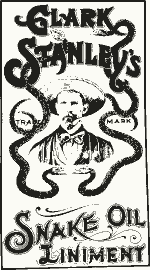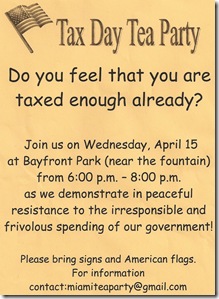
Image via Wikipedia
There are many companies out there who are offering Resveratrol.
How many have jumped the gun?
There is a huge distinction between rats and humans.
Evaluate the Suppliers:
- Have they performed the double-blind placebo based clinical human trials to verify safe, effective dosing? Ask for the data.
- Have they stabilized the delivery of Resveratrol so that the XX mg per dose you have in their bottle today is also there when you open their bottle tomorrow?
Note: The amount of Resveratrol in a bottle of Pinot Grigio is diminished by approximately 50% when the bottle is opened the following day.
Do the research, evaluate the suppliers and it will make a difference in your supplemental health regime. I recommend Univera.
Studies showed that resveratrol increased life span in lower organisms by activating the NAD (+)-dependent histone deacetylase Sirt1. And, it was found that that resveratrol promoted longevity and improved glucose homeostasis in mice by stimulating the Sirt1-mediated deacetylation of the transcriptional coactivator PGC-1alpha. [7] Researchers are interested to know if resveratrol benefits animals suffered from chronic diseases, such as diabetes. The following is a summary of a few interesting research studies about the potential benefits of resveratrol on chronic diseases, such as diabetes. In 2001, Naderali EK and co-workers from University of Liverpool found resveratrol (5-35 micromole/l) induced concentration-dependent relaxation of mesenteric arteries preconstricted with noradrenaline (8 micromol/l) or KCl (125 mmol/l) from both lean and dietary-obese rats. [1] Hyperglycemia, a symptom of diabetes mellitus, induces hyperosmotic responses, including apoptosis, in vascular endothelial cells and leukocytes. Hyperosmotic shock elicits a stress response in mammalian cells, often leading to apoptotic cell death. Moreover, resveratrol was found to attenuate high glucose-induced apoptotic changes by virtue of its antioxidant property. [2] Diabetic nephropathy is a serious vascular complication and one of the main causes of end-stage renal disease. Increased oxidative stress plays an important role in the etiology of diabetic nephropathy. In a study, researchers found treatment with resveratrol significantly attenuated renal dysfunction and oxidative stress in diabetic rats. [3] Most of type 2 diabetes mellitus patients eventually become insulin dependent because insulin secretion by the islets of Langerhans becomes exhausted. In the present study, researchers from Chang Gung University, Taiwan, showed that resveratrol (3,5,4'-trihydroxylstilbene) possesses hypoglycemic and hypolipidemic effects in streptozotocin-induced diabetes rats. In resveratrol-treated diabetic rats, the plasma glucose concentration on day 14 was reduced by 25.3%, and the triglyceride concentration was reduced by 50.2% compared with the placebo-treated rats. In nicotinamide-treated diabetic rats, the plasma glucose oncentration on day 14 was reduced only by 20.3 %, and the triglyceride concentration was reduced by 33 %. Resveratrol administration ameliorates common DM symptoms, such as body weight loss, polyphagia, and polydipsia. In STZ-nicotinamide DM rats, resveratrol administration significantly decreased insulin secretion and delayed the onset of insulin resistance. [4] Usually, diabetic rats exhibited a significant thermal hyperalgesia and cold allodynia along with increased plasma glucose and decreased body weights. Allodynia means other pain. It is a painful response to a usually non-painful stimulus. Hyperalgesia is an increased sensitivity to pain, which may be caused by damage to nociceptors or peripheral nerves. [Wikipedia] Sharma S and co-workers from Panjab University, India, reported treatment with resveratrol (10mg/kg orally) from week 4 to week 6 significantly attenuated the cold allodynia and thermal hyperalgesia, suggesting the application of resveratrol in diabetes, especially for diabetic neuropathy. [5] Researchers, at Boston University Medical Center, revealed inactivation of hepatic AMP-activated protein kinase was a key event in the pathogenesis of hyperlipidemia in diabetes (based on a study of in type 1 diabetic LDL receptor-deficient mice). They showed that resveratrol could lower lipid levels by activating AMP-activated protein kinase. It was about 200 times the potency of Metformin! [6] Recent Research Studies of Resveratrol on Diabetes Schmatz R and co-workers from Universidade Federal de Santa Maria, Brazil, found that treatment with resveratrol prevented the increase in acetylcholinesterase activity and consequently memory impairment in diabetic rats. [8] Palsamy P and other India researchers found daily oral treatment of resveratrol to diabetic rats for 30 days demonstrated a significant decline in blood glucose and glycosylated hemoglobin levels and a significant increase in plasma insulin level. The administration of resveratrol also reverted the altered activities of the key enzymes of carbohydrate metabolism such as hexokinase, pyruvate kinase, lactate dehydrogenase, glucose-6-phosphatase, fructose-1,6-bisphosphatase, glucose-6-phosphate dehydrogenase, glycogen synthase and glycogen phosphorylase in liver and kidney tissues of diabetic rats to near normal levels. [9] Researchers from New York Medical College observed that resveratrol increased mitochondrial mass and mtDNA content, up-regulated protein expression of electron transport chain constituents and induced mitochondrial biogenesis factors (PGC-1alpha, Nrf-1, Tfam) in cultured human coronary arterial endothelial cells. They found resveratrol treatment normalized impaired mitochondrial biogenesis in aortas of type 2 diabetic mice. This suggests the potential benefits of resveratrol on diabetes or metabolic diseases. [10] Researchers from Dortmund University of Technology, Germany, observed that resveratrol could inhibit the formation of islet amyloid polypeptide (IAPP) fibril. Following preferential partitioning of IAPP into the fluid lipid phase, the membrane of beta-cells suffered irreversible damage and predominantly circularly-shaped lipid-containing IAPP amyloid was formed. Deposition of amyloid in the extracellular matrix of beta-cells commonly occurs in type II diabetes mellitus. Thus, resveratrol may benefit animals suffered from diabetes. [11] Rodella LF and co-workers from University of Brescia, Italy, found resveratrol and cobalt protoporphyrin administration increased heme oxygenase-1 protein expression and heme oxygenase activity in the aorta and significantly increased serum adiponectin levels, compared to untreated diabetic rats. Increased heme oxygenase-1 expression usually improves vascular function. [12] Resveratrol decreased blood glucose, glycosylated hemoglobin, blood urea, serum uric acid, serum creatinine and diminished activities of pathophysiological enzymes such as aspartate transaminase (AST), alanine transaminase (ALT) and alkaline phosphatase (ALP) in diabetic rats after 30 days of treatment. [13] The prevalence of nonalcoholic fatty liver disease is high.nonalcoholic fatty liver disease is linked to obesity, diabetes mellitus, and hypertriglyceridemia. Approximately 20% of patients with nonalcoholic fatty liver disease will eventually develop cirrhosis. Resveratrol was found to decrease nonalcoholic fatty liver disease severity in rats. This effect was mediated, at least in part, by tumor necrosis factor alpha (TNF-alpha) inhibition and antioxidant activities. [14] Resveratrol Benefits and Side Effects Resveratrol Arthritis Resveratrol Cream Resveratrol Cancers Does grape seed extract lower bad cholesterol?
Source: Does resveratrol helps diabetes?
![Reblog this post [with Zemanta]](http://img.zemanta.com/reblog_b.png?x-id=f7857667-df11-4f3f-8d6f-740e2a28619c)


![[PLAY]](http://intelligentdesign.podomatic.com/img/play_button.gif)
![Reblog this post [with Zemanta]](http://img.zemanta.com/reblog_b.png?x-id=dd01da2b-d28f-476c-9a91-85427851fca6)


![Reblog this post [with Zemanta]](http://img.zemanta.com/reblog_b.png?x-id=b795f929-69ce-42e9-b2cd-2838dd3ec540)

![Reblog this post [with Zemanta]](http://img.zemanta.com/reblog_b.png?x-id=5d187fd9-0b79-4605-8cd5-a7588a4a2a68)

![Reblog this post [with Zemanta]](http://img.zemanta.com/reblog_b.png?x-id=47794d95-7262-4fd6-bb4e-9a95bcc33ea7)


![Reblog this post [with Zemanta]](http://img.zemanta.com/reblog_b.png?x-id=5fd839e9-f40f-4dd6-8a4d-8d8d3ebe3c6e)


![Reblog this post [with Zemanta]](http://img.zemanta.com/reblog_b.png?x-id=26fd80a8-7fb9-4770-a851-caee6917c8b6)



